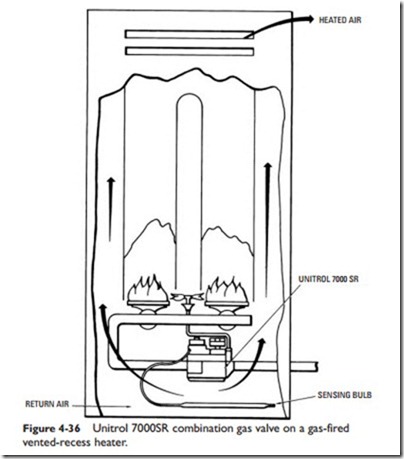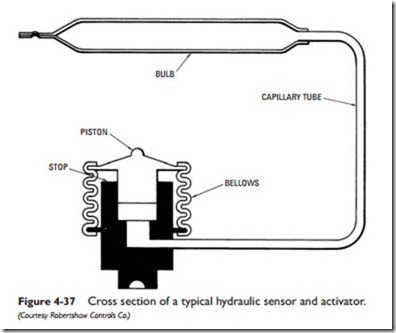Proportional Thermostats
Some thermostats are designed to provide proportional control for valve and damper motors in heating or cooling systems. This type of controller is generally referred to as a proportional thermostat.
The Honeywell T92 proportional thermostat, shown in Figure 4-39, contains a bellows that adjusts one or two potentiometers in proportion to temperature changes. These potentiometer adjustments regulate the power supplied to the controlled device. This particular thermostat is designed to provide 24- to 30-volt proportional control for valve and damper motors in the system. Those models equipped with two potentiometers are capable of unison or sequence control.
Outdoor Thermostats
An outdoor thermostat is designed to maintain the proper balance between the temperature of the heating medium inside the structure and the outdoor temperature.
The outdoor thermostat, illustrated in Figure 4-40, can be used as an operating controller for a hot-water or warm-air heating sys- tem. This is a remote-bulb thermostat suitable for line voltage, low- voltage, or millivolt switching. It is designed to automatically raise the heating medium control point as the outdoor temperature falls.
Outdoor thermostats are frequently used as controllers in hot- water heating systems. A simple on-off control is possible, but this usually involves stopping the circulation of the water in the system during those periods when there is no call for heat. Anticipating
control systems are preferred to the simple on-off types because there is no noticeable lag time between cold temperatures and a call for heat. An anticipating control system provides continuous circulation of the water temperature in direct ratio to changes in out- door temperature.

